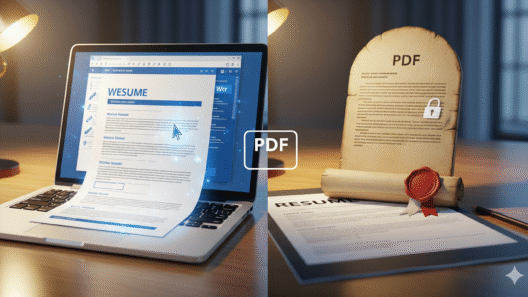Ever notice how some websites immediately grab your attention — even though they’re selling the same thing as dozens of competitors? You might not even realize why, but something about the way they present themselves feels different. It’s not the product. It’s the story.
The most effective websites don’t just describe what they do. They connect. They explain why their work matters, who it helps, and how it makes a difference. They translate features into meaning.
That’s exactly how your LinkedIn profile should work.
The Problem: Most People Just List Jobs
Scroll through LinkedIn and you’ll notice a pattern: endless profiles that read like copied-and-pasted resumes. Title. Company. Dates. Bullet points. A few buzzwords like “results-driven,” “motivated,” or “team player.”
The problem? That kind of profile doesn’t make anyone feel anything. Recruiters and hiring managers aren’t just searching for people with the right skills — they’re searching for people who seem to understand their challenges and can make an impact.
If your profile reads like a job description, you blend in. If it reads like a story, you stand out.
Think Like a Storyteller, Not a Job Seeker
A good story has three parts: context, action, and outcome. That same structure works perfectly on LinkedIn.
Instead of writing,
“Responsible for managing cross-functional teams.”
Try this:
“Led a team of designers and engineers to deliver projects faster and improve customer satisfaction scores.”
The difference is subtle but powerful. The second line gives a sense of purpose — what you did, why it mattered, and what changed because of your work. That’s storytelling.
When you describe your roles, don’t just say what your job was. Show what you did and what happened as a result.
Your Headline Is Your Homepage
Think of your LinkedIn headline like the homepage of a website. It’s the first thing people see, and it decides whether they keep reading.
Instead of writing “Marketing Manager at XYZ Company,” use that space to highlight what makes you valuable:
“Marketing Leader Helping Brands Grow Through Data-Driven Storytelling.”
Your headline should summarize your value, not your title. It’s your personal tagline — a one-line story that hooks the reader.
Your About Section Is Your Story Page
This is where you explain the “why” behind your work. Don’t just repeat your resume. Use it to describe your journey, what drives you, and what you bring to the table.
A strong About section reads like a short narrative: What you do, why you do it, the problems you love solving, and the impact you’ve made.
The tone can still be professional — just not robotic. Write like you’re talking to a colleague over coffee, not submitting a report.
Why This Matters
Recruiters scroll through hundreds of profiles a week. The ones that stand out aren’t always the ones with the longest lists of skills — they’re the ones that feel human.
A clear, story-driven profile helps people remember you. It shows not just what you’ve done, but how you think, how you solve problems, and how you might fit into their team.
And in a market where attention is the most limited resource, that’s your real advantage.
Bottom Line
Your LinkedIn profile is not a digital filing cabinet for your resume — it’s your personal landing page. Treat it like a story-driven website that shows why your work matters.
Because when someone visits your profile, they’re not just looking for information. They’re looking for connection.
Make sure your story gives them a reason to stay.







